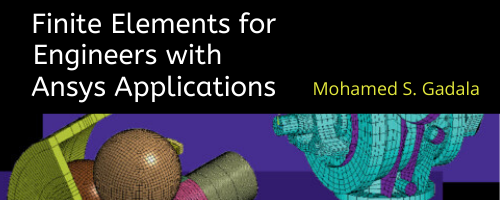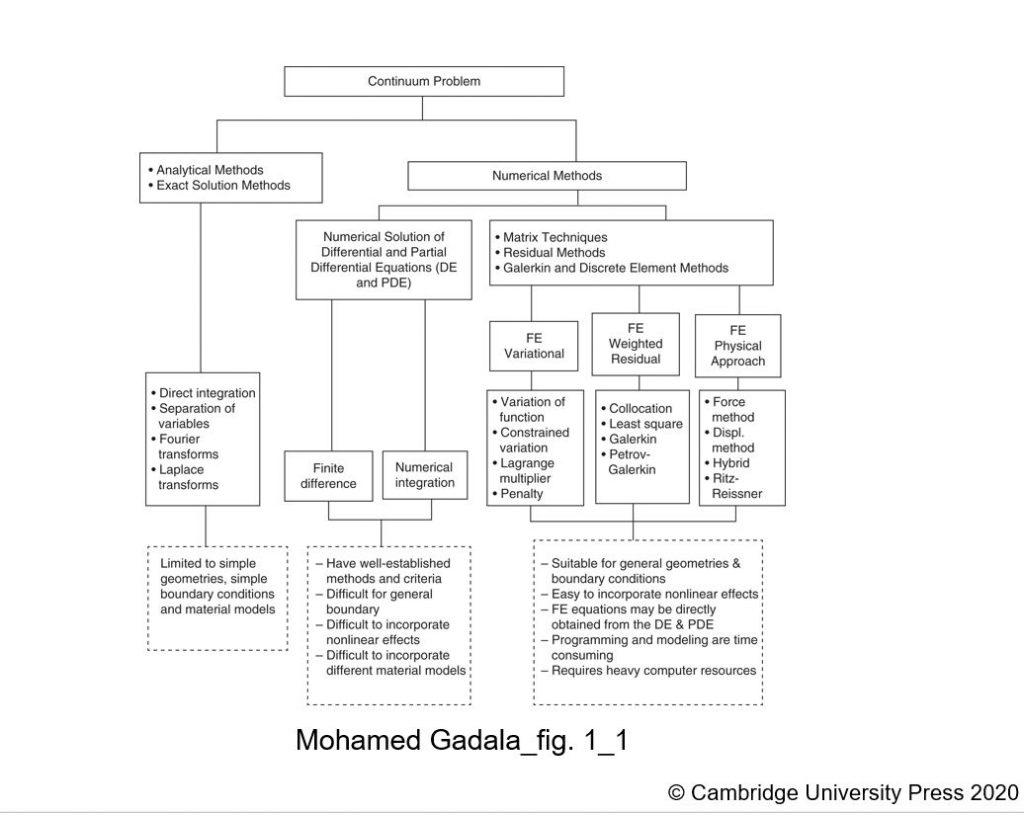
Inspired by over 40 years’ industrial/academic experience in the field, Finite Elements for Engineers with ANSYS Applications by Mohamed Gadala is out now. This textbook targets users of the finite element method for design and analysis in both undergraduate and graduate fields with a step-by step methodology that addresses the mathematical challenges faced by current students. Professor Gadala discusses the ins and outs of his new textbook below.
Professor Gadala has an extensive career in teaching and interacting with F.E.M, with notes, feedback and understanding of students culminating in this brand new textbook. He says,
“I realized that many students have difficulty in understanding the rigorous math required for the subject and, hence, they lose the concept altogether. I always believed that presenting the concepts in an easy way to grasp before getting into rigorous math would be much better for beginners and students. This is exactly what I tried to do in the text.”

Finite Elements for Engineers seeks to address the concerns raised by students over the course of Gadala’s career in a number of ways. Of particular importance is the time devoted to the logical approach to application, modelling techniques and design without losing important theory behind F.E.M. This approach, Gadala says, really helps with how comfortable the students get with new processes and grasp the rigorous mathematical requirements of the courses, one of the major challenges from his point of view.
One student’s feedback to his teaching notes, before the book was published, reads, “What I like about this course is that I came in not knowing anything about F.E.M and [was] sort of scared, but in just very few classes I became very confident about the subject and I could start using a program like ANSYS”
Professor Gadala’s new textbook would, referencing the title, be best suited to courses that use ANSYS, one of the major programs used by industry practitioners. That being said, Gadala also mentions that the extensive set of examples and work sets could in theory be solved using MATLAB, depending on the question posed.
Use of industry programs in order to solve problems related to F.E.M also sit alongside hand calculations that students are tasked with, all stemming from the 40 years of experience with both industry and teaching. A solutions manual is provided to cover most of the problems that come at the end of each chapter.
The challenge of a distance learning, or adapting to a hybrid learning environment, for upcoming courses has also started to cross into Professor Gadala’s courses, as it will for many instructors in the new academic year. Currently, Gadala is delivering online lectures via Teams focusing on the difficult points that are covered by a pre-recorded lecture on the topic of the week. He says “Exams [will be] difficult to handle, but it might be best to rely on open book exams. [There are also more possibilities to use] projects for course evaluation.” The step-by-step methodology provided in approaching F.E.M design and application using ANSYS will, he hopes, very much help deliver good learning outcomes for each student.
Finite Elements for Engineers with ANSYS Applications is now available on the new Higher Education from Cambridge University Press website. This new home for textbooks aims to deliver both institutional access online via our new Cambridge Spiral eReader app, and the option to purchase individual print or eBook formats.
To find out more and request an examination copy of this textbook, please visit www.cambridge.org/highereducation/ISBN/9781107194083.
Latest Comments
Have your say!